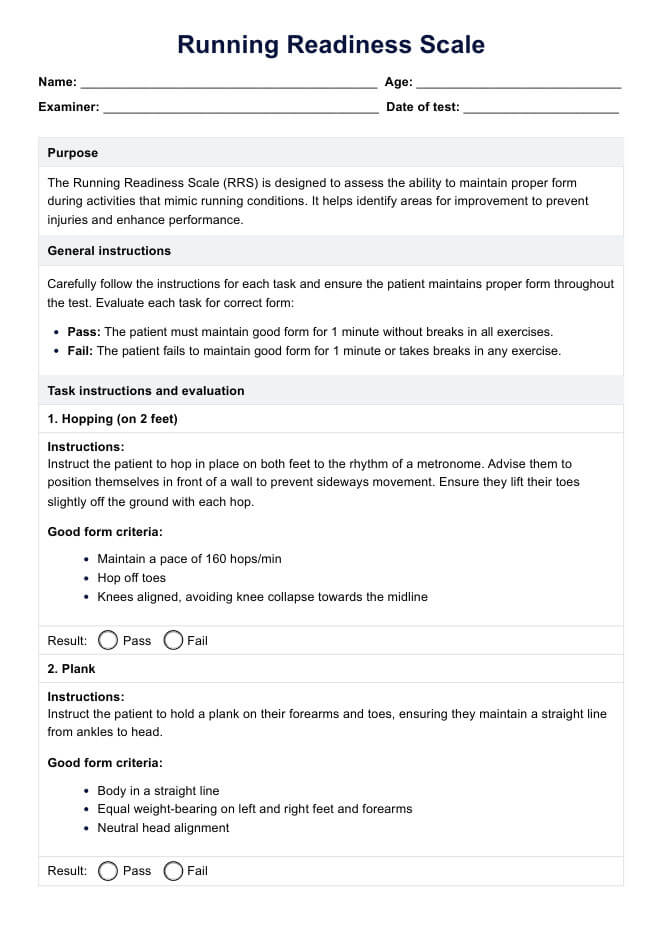The Running Readiness Scale assesses an individual’s preparedness for running by evaluating their ability to maintain proper form during specific tasks. It helps identify areas needing improvement to prevent injuries and enhance performance.

Running Readiness Scale
Assess running readiness with our comprehensive Running Readiness Scale template. Perfect for healthcare professionals to evaluate and enhance patient performance.
Running Readiness Scale Template
Commonly asked questions
The frequency of using the Running Readiness Scale depends on the patient’s progress and recovery needs. It can be used periodically to monitor improvements and adjust rehabilitation programs accordingly.
The Running Readiness Scale can benefit athletes recovering from injuries, individuals starting a new running regimen, or those experiencing running-related injury issues. It provides valuable insights into running readiness scale tasks,and helps tailor training programs to individual needs.
EHR and practice management software
Get started for free
*No credit card required
Free
$0/usd
Unlimited clients
Telehealth
1GB of storage
Client portal text
Automated billing and online payments











